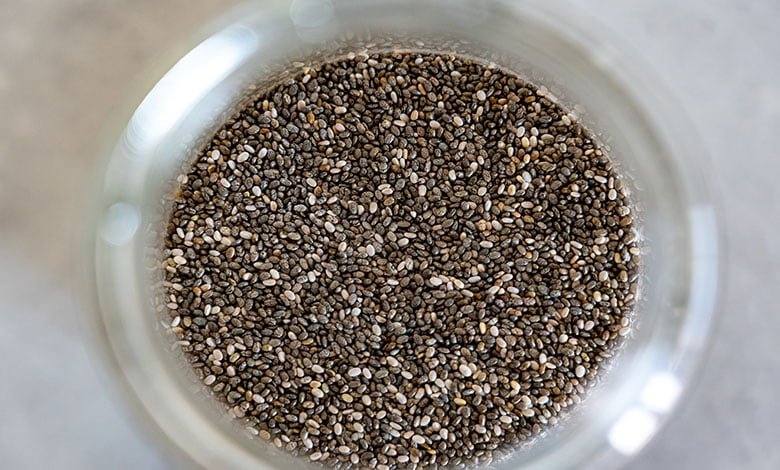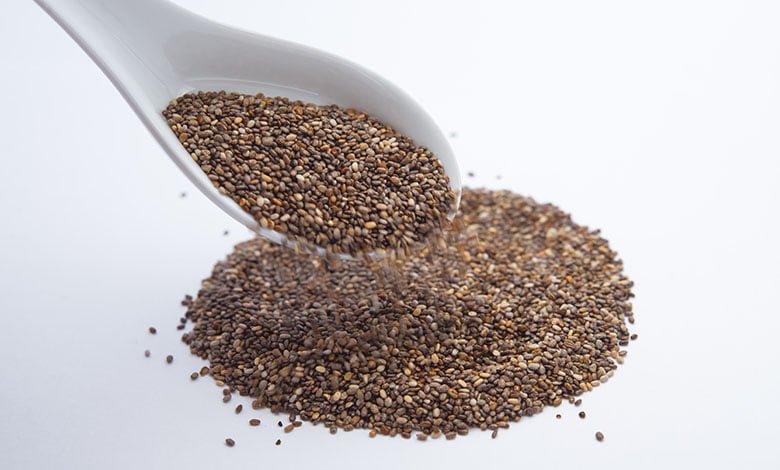Chia Seeds: Nutritional Value Benefits Uses and Potential Side Effects
Chia Seeds: Nutritional Value Benefits Uses and Potential Side Effects
Chia Seeds: Nutritional Value Benefits Uses and Potential Side Effects
Chia seeds are the small black seeds of the chia plant (Scientific name: Salvia Hispanic), native to Mexico and Guatemala, and the word chia is an ancient word in the Maya civilization, meaning strength, and chia seeds were a staple food for the Aztec peoples. Aztecs), and the ancient Maya civilization. Chia seeds are flat, shiny, oval in size, with a smooth texture, and range in color from white to brown or black.
chia seeds benefit
Despite the small size of chia seeds, they are rich in many important nutrients and have many benefits, as they improve the health of the digestive system, and contribute to raising omega-3 levels in the blood, and we mention the following some of the health benefits of chia seeds:
- Rich in minerals: Chia seeds are rich in many minerals, but they lack vitamins. Here are some of the most abundant types of minerals in chia seeds:
- Manganese: Whole grains and seeds are foods rich in manganese, a mineral essential for metabolism, growth, and development.
- Phosphorous: Phosphorous contributes to maintaining the health of bones and tissues, and is usually found in foods rich in protein.
- Copper: Copper is an important mineral for heart health, and is often lacking in modern diets.
- Selenium: An important antioxidant, selenium plays a role in many processes within the body.
- Iron: Iron is involved in transporting oxygen throughout the body because it is a component of hemoglobin in red blood cells. It should be noted that the absorption of iron from chia seeds may be affected due to its content of phytic acid.
- Magnesium: plays magnesium important role in many processes within the body, and is often lacking in modern diets.
- Calcium: Calcium is a mineral necessary for healthy bones, muscles, and nerves, and is the most abundant mineral in the body.
- A rich source of dietary fiber soluble: One serving of chia seeds provides a third of the daily requirement of dietary fiber, and this fiber helps to increase the amount of stool, nourish the beneficial bacteria in the intestine, slow down digestion, which increases the feeling of satiety and helps control blood sugar.
Chia Seeds: Nutritional Value Benefits Uses and Potential Side Effects

Chia seeds nutritional value
The following table shows the nutrients contained in 100 grams of chia seeds:
nutritional element | Nutritional value |
Water | 5.8 milliliters |
energy | 486 calories |
Protein | 16.5 grams |
total fat | 30.7 grams |
carbohydrates | 42.1 grams |
Calcium | 631 milligrams |
Iron | 7.72 milligrams |
magnesium | 335 milligrams |
phosphorous | 860 milligrams |
potassium | 407 milligrams |
Sodium | 16 milligrams |
zinc | 4.58 milligrams |
fiber | 34.4 grams |
copper | 0.924 milligrams |
manganese | 2.72 milligrams |
selenium | 55.2 micrograms |
vitamin C | 1.6 milligrams |
Vitamin B1 | 0.62 milligrams |
Vitamin B2 | 0.17 milligrams |
Vitamin B3 | 8.83 milligrams |
folate | 49 micrograms |
Vitamin A | 54 IU |
Vitamin E | 0.5 milligram |
Chia Seeds: Nutritional Value Benefits Uses and Potential Side Effects
How to use chia seeds
It is easy to introduce chia seeds to the diet, and they can be added to any dish, as they do not affect the taste much, and they do not need to be ground like flax seeds, which makes their preparation easier, as they can be eaten raw, or soaked in juice, or Add it to porridge, pudding, cocktails, or add it to baked goods, and a little of it can be sprinkled when eating breakfast cereals, yogurt, vegetables, or rice.
The seeds can also be used to prepare chia jelly, by following the following steps:
- Put half a cup of seeds in a cup of water, stir well and then cover. Chia seeds absorb water quickly and can double their weight up to 10 times in liquid.
- Leave the previous mixture for 15-20 minutes until the texture changes to soft gelatin.
- Adding chia jelly to juices and soups enhances the nutritional value and creates a thicker texture, and this jelly can be kept in the refrigerator for up to a week.
How many chia seeds can be eaten?
There are no precise and specific guidelines about the amount of chia seeds that can be eaten per day, and the appropriate dose depends on several factors, such as age, health condition, etc. It is worth noting that natural products are not necessarily always safe, and determining the doses can be important Be sure to follow the directions on product labels and consult your pharmacist, doctor, or another healthcare provider before use.
Chia seed’s side effects
Chia seed safety
Chia seeds are often considered safe when ingested in the quantities usually found in food, and it is likely to be safe to consume in larger quantities, for a period of up to 6 months, and large doses of them may cause mild stomach discomfort in some people, but in cases of pregnancy and lactation, there is not enough reliable information to know Whether it is safe to use chia during these periods, it is advised to stay on the safe side and avoid its use.
Chia Seeds: Nutritional Value Benefits Uses and Potential Side Effects
Disadvantages of using chia seeds
Caution is recommended when using chia seeds for the following categories:
- People with a higher fat triple in the blood: the blood contains several types of fats, including cholesterol and triglycerides, and high levels of triglycerides in some people dramatically, and can eat lead some types of shea to make it go up more, so it is advised people who They suffer from this problem by using a specific type of chia called Salba, which does not affect triglyceride levels significantly.
- Prostate cancer patients: People with prostate cancer, or at risk of developing it, should avoid excessive consumption of chia seeds. This is because they contain a large amount of alpha-linolenic acid, as some research indicates that large amounts of this acid in the diet may increase the risk of prostate cancer.
- People who are allergic to some plants: It is uncommon to have an allergy to chia seeds, however, there are a few cases of allergies to plants from the same family to which chia seeds belong, such as anaphylaxis of menthol in toothpaste, and allergy symptoms. Food after eating thyme, oregano is common, in addition to infection with dermatitis when exposed to extracts of the previously mentioned plants in cosmetics.
Chia Seeds: Nutritional Value Benefits Uses and Potential Side Effects
drug interactions with chia seeds
Chia seeds may lower blood pressure, and this affects people who take high blood pressure medications, which may cause a sharp drop in their pressure, especially when the intake of chia seeds suddenly increases.

